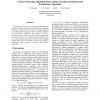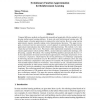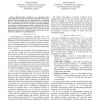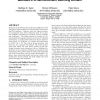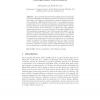5114 search results - page 31 / 1023 » Learning for Evolutionary Design |
HIS
2004
13 years 11 months ago
2004
In this paper, a new fuzzy clustering algorithm that uses cellular learning automata based evolutionary computing (CLA-EC) is proposed. The CLA-EC is a model obtained by combining...
CORR
2010
Springer
13 years 10 months ago
2010
Springer
Temporal difference methods are theoretically grounded and empirically effective methods for addressing reinforcement learning problems. In most real-world reinforcement learning ...
CEC
2008
IEEE
14 years 4 months ago
2008
IEEE
—Representation techniques are important issues when designing successful evolutionary algorithms. Within this field the use of neutrality plays an important role. We examine th...
GECCO
2006
Springer
14 years 1 months ago
2006
Springer
Both genetic algorithms (GAs) and temporal difference (TD) methods have proven effective at solving reinforcement learning (RL) problems. However, since few rigorous empirical com...
EVOW
2009
Springer
14 years 4 months ago
2009
Springer
The Learnable Evolution Model (LEM) involves alternating periods of optimization and learning, performa extremely well on a range of problems, a specialises in achieveing good resu...
